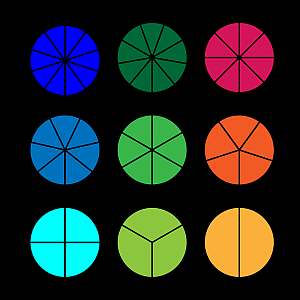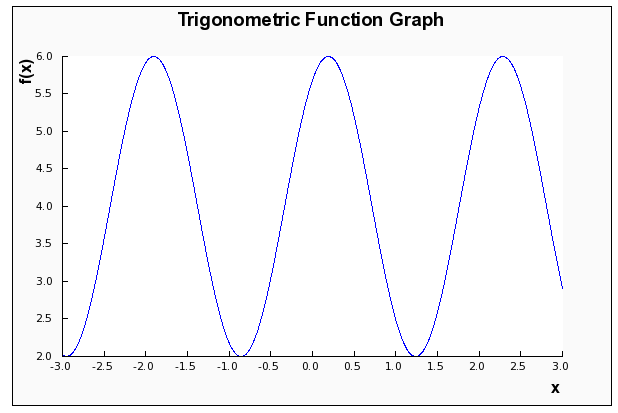Fraction Calculator
Instructions: Use this fraction calculator to compute any fraction operation or calculation you provide, showing all the steps. Pleas type in the fraction calculation you want to carry out in the form box below.
More about this fraction calculator
This calculator will allow you adding fractions, multiplying fractions, dividing fractions, etc., and any valid fraction operation, showing all the steps. You need to provide a valid expression involving fractions. It could be something simple as '1/2 + 1/3', or something more complex like '(1/3+1/4)(1/5+1/6)'.
Once you provide a valid expression involving fraction, all you need to do is to click on the "Calculate" button, and you will be provided with all the steps of the calculations.
Fractions algebra involves fraction conversion such as the use of common denominator, and the use of basic arithmetic rules. All in all, the process of the calculation can be laborious, although it can be done systematically, without much of a problem.

How do I calculate fractions
To calculate fractions you will use a very simple and straightforward methodology, which will depend on the operation (addition, subtraction, multiplication or division) you want to conduct. Each operation will have its own logic.
In simple terms, additions and subtractions require finding a common denominator, whereas multiplication and division operate directly numerators and denominators. More details about that in the paragraphs below.
How to add fractions?
Adding fractions is one of the most crucial and basic skills you will use when calculating fraction operations. Usually, you need to start with finding a common denominator, but often times you will use the following formula for fraction addition:
\[\displaystyle \frac{a}{b} + \frac{c}{d} = \displaystyle \frac{ad + cb}{bd} \]What are the steps for adding fractions?
- Step 1: Identify the numerator and denominator for the first and second fraction
- Step 2: Assume that a and b are the numerator and denominator of the first fraction, and c and d are the numerator and denominator of the second fraction
- Step 3: Use the addition formula: The resulting fraction has ad + cb as the numerator, and bd as the denominator
Subtracting fractions is just derived by the sum of fractions: To subtract two fractions, you just multiply the second one by -1, and the add it to the first.
How to multiply fractions?
The second corner stone to conduct general fraction calculations is multiplying fractions. In this case, there is no need to find a common denominator, you will just multiply the numerators and denominators together:
\[\displaystyle \frac{a}{b} \times \frac{c}{d} = \displaystyle \frac{ac}{bd} \]What are the steps for multiplying fractions?
- Step 1: Identify the numerator and denominator for the first and second fraction
- Step 2: Assume that a and b are the numerator and denominator of the first fraction, and c and d are the numerator and denominator of the second fraction
- Step 3: Use the addition formula: The resulting fraction has ad + cb as the numerator, and bd as the denominator
Similar to what happened with addition and subtraction, dividing fractions is just derived from the multiplication of fractions: To divide two fractions, you just multiply first one by the inverse fraction of the second one (the inverse fraction is obtained by swapping the numerator by the denominator in the fraction).
Decimal to fractions
You can convert any decimal to fraction using a simple trick. Some decimals will be easier to convert, specifically those that have a finite number of decimals. Periodic decimals can also be converted. These are the steps to follow:
- Step 1: Identify the type of number you are working with, and identify if it has decimals digits or not. If D it has decimals, assess how many decimals it has
- Step 2: If D does not have decimals, the conversion to fraction is direct, as we know \(D = \frac{D}{1}\)
- Step 3: If D has a finite number of decimal digits, say it has k decimals. In case you multiply D by \(10^k\) to eliminate the decimals, and then you find that \(D = \frac{D \times 10^k}{10^k}\), and then you reduce the fraction as needed.
- Step 4: If D has an infinite number of decimal, so it is periodic, you do the following trick: Multiply the number by a power of 10 that when doing 10D - D eliminates the periodicity, and then you get that 9D is a finite decimal, which you deal with using Step 3.
For example, you could ask what is 1.214285714 as a fraction, and we notice that D = 1.214285714 has 9 decimal digits. So we observe that
\[D = 1.214285714 = \frac{1.214285714 \times 10^9}{10^9} = \frac{1,214,285,714}{1,000,000,000} = \frac{607,142,857}{500,000,000} \]For a period number, say you have D = 2.349999999.... The periodic part starts that the third decimal digit position, so we multiply D by 100. We get that 100D = 234.999999....
Now, we subtract D from 100D we get \(100D - D = 234.999999.... - 2.349999 = 232.65\), which implies that \(99D = 2.3265\), which can be processed as follows:
\[99D = 232.65 \Rightarrow 9900D = 23265 \Rightarrow D = \frac{23265}{9900} = \frac{47}{20} \]Relationship Between Percentages and Fractions
As you probably suspect, percentages and fractions are tightly related. For example, a percentage of 80% is simple 0.80, which is a decimal, and using the steps above you can directly convert it into fraction.
Then, since decimals and fractions are so intimately related, a percentage calculator and a fraction calculator are also tightly related.
Why would care about computing fractions?
Fractions are one of the corner stones of algebra and of any general algebraic expression to calculate. Fractions are simple operands, but which can be compounded into more complicated terms using operations like sum, multiplication, etc., and then using functions we can construct even more advanced expressions.
The center of all algebraic calculator starts with the power of basic numbers of fractions.

Example: Calculating the sum of fractions
Calculate the following: \(\frac{1}{3} + \frac{5}{4} - \frac{5}{6}\)
Solution:
We need to calculate and simplify the following expression: \(\displaystyle \frac{1}{3}+\frac{5}{4}-\frac{5}{6}\).
The following calculation is obtained:
which concludes the calculation.
Example: Another fraction calculation
Calculate \( \left(\frac{2}{3} \times \frac{6}{5} \right)+ \frac{2}{5} \).
Solution:
We need to calculate and simplify the following expression: \(\displaystyle \left(\frac{2}{3}\cdot\frac{6}{5}\right)+\frac{2}{5}\).
The following calculation is obtained:
which concludes the calculation.
Other useful fraction calculators
Fraction calculations are crucial in Algebra. Other useful operations include simplifying a fraction by reducing to its lowest terms. Also, you can convert fraction to percentage or fraction to decimal, as those have an intimate connection.
Also, you may be interested in a mixed fraction calculator, depending on your learning setting. In more elementary settings, mixed numbers are treated as important entities, whereas in more advanced settings, mixed numbers are just presented in their fraction notation..




